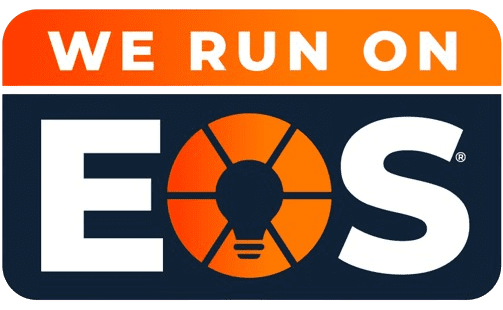During a recent webinar Omnia co-hosted with HR Elements, the presenters polled the audience about the metrics they monitor within their organizations. Over 70% of the respondents said employee turnover is the most important metric they track. This poll result underscores how significant an issue employee turnover is for businesses as well as the importance of implementing effective employee retention strategies.
Why Employee Retention Matters
Employee retention reduces the need for constant hiring and training. High retention rates often indicate a healthy organizational culture where employees feel valued and are motivated to contribute to the company’s success. On the other hand, a high turnover rate signals potential issues within the organization that need to be addressed. Some reasons for focusing on employee retention include:
- Cost Savings: Recruiting and training new employees is expensive. Benchmarking data from the Society for Human Resource Management (SHRM) shows that the cost to source and select new talent averages nearly $4,700 per hire (with the cost to hire an executive averaging over six times that amount). Beyond direct costs such as placing job ads and conducting background checks, businesses also face hidden “soft” costs like time spent onboarding the new employee and lost productivity for the people who are coaching the new hire. Gallup estimates that the total cost of replacing an employee can range from one-half to two times the employee’s annual salary. By investing in strategic retention solutions, companies can significantly reduce these costs.
- Boosted Productivity: Retaining experienced employees ensures that skilled and knowledgeable workers continue to contribute to the organization. Experienced employees require less supervision, are more familiar with the company’s processes, and can be more efficient in their roles. Consistent teams can also collaborate better, leading to enhanced innovation and productivity.
- Improved Morale and Engagement: Employee retention helps build a stable workforce with individuals who have established bonds through shared experiences and who are familiar with each other’s talents and challenges. Conversely, high employee turnover can have a negative impact on team morale, as employees are constantly faced with the uncertainty of people coming in and out of the organization.
- Better Customer Service: Long-tenured employees have the benefit of knowing the company’s products and services inside and out. This allows them to provide better customer service and helps build stronger relationships with clients. Employees who stay longer are more likely to take pride in their work and feel invested in the company’s long-term success.
Organizations invest significant resources into hiring and training new employees, but all that effort can be undone if employees don’t stay with the company. High turnover rates incur financial costs for a business while also impacting organizational morale, productivity, and the company’s reputation. Gallup reports that 51% of U.S. employees are watching for or actively seeking a new job, so businesses need to be proactive about establishing and continually improving their employee retention strategies.
Why Employees Jump Ship and How to Get Them To Stay On Board
Numerous factors contribute to an employee’s decision to stay with or leave an organization. Along with compensation, benefits, and work-life balance, 4 other important variables that have a significant impact on employee retention are:
1. The 90-Day Drift
According to a study by Jobvite, 30% of employees surveyed left their jobs within the first 90 days of starting their new role. This staggering statistic illustrates the value of finding the right person for the right job from the start. The Omnia Assessment helps companies do just that by uncovering a candidate’s natural behavioral traits.
The insights offered in the customized Omnia Selection Profile and the automated Target Selection Profile give a glimpse behind the scenes of a job candidate’s intrinsic attributes, which could otherwise take weeks or months to become apparent after hiring the individual. Additionally, the analysis compares the candidate’s traits to the characteristics needed for success in the position, showing where they align and where they differ. Equipped with this knowledge, organizations are empowered to get the most out of the interview process and make data-informed hiring decisions.
2. Management Style
The relationship between employees and their managers plays a critical role in retention. Employees who feel respected, supported, and fairly treated by their supervisors are more likely to stay. Conversely, micromanagement, lack of feedback, or poor communication can lead to dissatisfaction and higher turnover rates.
Understanding how each person wants to be managed can elevate a leader’s ability to retain employees and cultivate a productive, thriving team. The Omnia Retention Profile illustrates not only an employee’s behavioral traits but also their motivators and preferred way to be managed. The employee’s and manager’s behavioral profiles can also be compared to each other, explaining where there are similarities and how to navigate any challenging differences. Additionally, Omnia’s Leadership Profile is a self-awareness tool that offers individual insights to managers and supervisors, helping them better understand their own leadership styles so they can be more effective in their roles.
3. Employee engagement
42% of employees who voluntarily left their job report that the employer could have done something to prevent them from leaving. The bright side to this gloomy statistic is that 42% of employee turnover can be prevented. Employee engagement is an essential element in reducing employee turnover and retaining valued personnel. When Gallup compared businesses with strong employee engagement versus those with low employee engagement, the top-quartile business units and teams had 21% less turnover in high-turnover organizations and 51% less turnover in low-turnover organizations.
Understanding how different individuals within a team naturally communicate, what inspires them within their jobs, and their level of drive and ambition are a few of the important aspects to consider when developing strategies for keeping employees engaged. The Omnia Assessment provides all of those insights — and more!
4. Career Development Opportunities
Employees want to grow and develop in their careers. Offering opportunities for advancement, training programs, and mentorship can help employees see a future within the organization. Employees who feel stuck in their roles or perceive no room for growth are more likely to look elsewhere for opportunities.
But employee development isn’t a one-size-fits-all endeavor. Each employee has unique strengths and challenge areas that inform the best way to help them grow in their careers and within an organization. Omnia’s behavioral assessment shines a light on each individual’s job-based characteristics, motivators, and areas for improvement, allowing businesses to personalize coaching and professional growth strategies to the employee. This individualized approach makes employee development plans more impactful and helps foster employee loyalty and retention.
Countering employee turnover and improving employee retention is an ongoing enterprise that requires a concerted effort within a company. By understanding the factors that contribute to turnover and implementing effective retention strategies, organizations can build a strong, committed workforce that drives success and growth.
Omnia has been a trusted partner for our clients for nearly 40 years. Our scientifically validated behavioral assessment, along with the Omnia Cognitive Assessment and the Omnia Grammar Assessment, help our clients hire the right employees for the right jobs and grow engaged, successful teams. Contact us today to see how we can support your crew!























